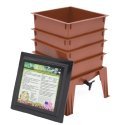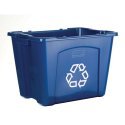A compost toilet is an alternative tool for a more sustainable way of human existence. A compost toilet is not just merely some peat moss, or sawdust, mixing itself with our human organic waste, in a bucket. A compost toilet is a way of keeping our rivers drinkable, by not throwing sewage into them. A compost toilet is a way of keeping our ground soil clean by not throwing our number one and number two into leaking septic tanks. A compost toilet is the lowest impact and environmentally friendly way to deal with human organic wastes.
Human beings have some of the worst habits concerning urban sanitation, due to an old Greek and Roman tradition. Plumbing. Not the redirection of water in and of itself, but the inconvenient way in which we usually dispose of our own human organic wastes. The toilet. The toilet uses water pressure to take our processed liquids and solids away to the sea, out of the public eye. And we forget about it.
Buy Envirolet Composting Toilets at best prices!
Most people don’t even know what happens when human fecal material comes in contact with water. Black water happens, and its toxic. No creature can drink black water. Plants will become disease ridden and die, and animals will become hosts to any pathogen that was in the human fecal material. Nasty water-born pathogens, that just love to spread. And the only way to make sure that they die, usually takes so many chemicals and processing filters to clean it. A compost toilet on the other hand, makes use of the breakdown process found in nature to purify highly pathogenic human organic wastes (both liquid and solid), into simple, safe, and useful organic resources that can be used in gardens as fertilizer.
A compost toilet can come in unlimited designs, and are found from the most rustic kinds as a mere chamber pot with a lid and some sawdust on it or as sophisticated as a solar powered port-a-potty, with a unique custom made tumbler baking chamber with automatic exhaust fan and fertilizing drawer retrieval unit, that could cost as much as 1,500 US$ and use special peat moss bought from the local department store. Compost toilet systems that use a compost pile need to be attended to, throughout the composting process, while those that do the job automatically are much more maintenance free, even though most people won’t want to use a compost toilet when visiting. They might have a hard time trading a white hole filled with water for a black hole that smells like sawdust. But whatever the kind of compost toilet, the principles of thermophylic pathogen slaughter continue the same.
Given enough heat, malignant pathogens found in human fecal material will not survive a well designed compost toilet. When using a compost pile in extension to the compost toilet, 135 degrees Fahrenheit is the starting temperature for pathogen annihilation, all the way up to 160 degrees F. More than 160 degrees will usually start killing off the good guys who do all the thermophylic work… Purifying human organic waste materials through composting is a very important tool for the future, since it avoids even polluting our rivers and streams, dealing with our human organic waste in accordance to mother nature.





